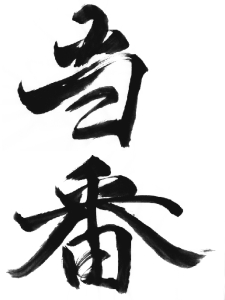THEMIS Tohban
This page is for the use of the THEMIS Tohban, and is maintained by Jonathan Eastwood (jonathan.eastwood at imperial.ac.uk).
What is a Tohban?
|
Tohban: (org.) japanese (def.) operator; duty officer The Tohban is a THEMIS scientist who helps the spacecraft operators in the Mission Operation Center (MOC) to optimize the science quality of the observations, and maintain the working order of the scientific instruments on board the five THEMIS spacecraft. The role is based on prior mission experience at the lab with RHESSI; the starting point for this webpage was the RHESSI webpage; which is where I got this image: |
|
Links
What does the Tohban have to do?
Attend the weekly operations meeting and science meeting on Tuesday morning.
- At these meetings the general plan for the week is decided. During commissioning this includes different instrument commissioning activities, overlapping with science observations. As the mission progresses, there will be minimal commissioning activity, and planning will be with the aim of maximizing the science return.
- At the end of the Tuesday meeting, there will be a number of planned activities for the coming week, and there should be a clear idea of what the priorities are. The Tohban is the person with the ultimate authority to deconflict requests from individual instruments and decide, based on science priorities, whatthe big picture of upcoming activity should be.
Work with the operations team to assist the MOC in their planning of the upcoming contacts, if necessary.
Look at the incoming data.
- There are automatic scripts (developed by Matt Davies) which deposit overview plots on the THEMIS website.
- Read Jim Lewis' FAQ on THEMIS data.
- There are specific scripts that the tohban can use to look at the data here.
- Look at the ground based data - read how to do that here.
- The Tohban should report any anomalous behavior; there are several known issues. The responsibility for lookinginto instrument health and data status still falls to the individualinstrument leads and their team. Eventually, other members of the team will be trained inthe task of verifying status and health of the instruments, but for now, this remains the responsibility of the instrument leads.
- SST specific - horizontal streak in the ion spectrum = effects of the sun pulse.
- ESA specific -
- Horizontal streak = one channel isn't available.
- When looking at counts, there is a discontinuity at ~ 1keV because in fast survey mode there are double the counts at lower energies.
- Vertical white lines usually mark FS/SS transitions.
- Perigee is below the radiation belts, so there should be no counts; counts in a single channel at 10keV in this region are not physical.
- Also watch out for a jump up in counts at the highest energy - this is dues to the retrace of the electrostatic potential between sweeps.
- Spotty dropouts, indicating link margin problems(?)
Find the substorms - using the official AE index and the THEMIS AE index (during the THEMIS prime mission phase).
- The THEMIS AE index is constructed from the THEMIS ground magnetometers. They can only see substorms when they are in the right place (i.e. near midnight). The rest of the day, they are on the dayside, and don't see the activity. The official AE index is constructed from magnetometers at the full range of longitudes, so they capture all the substorm activity. That is why substorms always appear to occur at the same time every day in the THEMIS AE index.
- There are full conjunctions every 4 days, and minor conjunctions every 2 days. The tail season proceeds from Wedding day - 60 to wedding day +60. Wedding day is 2 February 2008, so this is from 4 December 2007 (1st major conjunction) to 2 April 2008. For reference, 1 January 2008 was a major conjunction.
- Substorm list! Click here for the tohban substorm list at UCB, Here is the wiki page at UNH
a weekly report by 3pm Monday to be circulated with the agenda for the Tuesday Mission Ops meeting.
- Report data collection and quality during the past week, and what upcoming issues are important.
- Report substorm events that have been seen; this will be added to the substorm list.
- Short details about the spacecraft operations, edited from here.
- To edit this webpage, you will need to set up your access to the themistohban account; see here for details.
- Add your tohban report (with the name of the file following the established convention in the subdirectory)
- Edit the tohbanreports webpage so that the new report can be accessed.
- Edit the themissubstormlist webpage so that the new substorms from the report are listed.
- If you cannot do this, or are having trouble, please contact Jonathan Eastwood.
Who does the Tohban talk to?
On the operations side, Deron Pease and John McDonald fill the instrument support role. They handle instrument change requests, flat sat testing and instrument book keeping roles and are the primary point of contact for instrument queries. Other contacts are: Michael Ludlam, Peter Harvey and Dave King. At the MOC, Bryce Roberts and Mark Lewis, with Manfred Bester are the main points of contact.
Key contacts for the instruments are:
| Instrument | Contact |
| FGM | Uli Auster |
| SCM | Olivier Le Contel, Alain Roux |
| EFI | John Bonnell |
| SST | Davin Larson |
| ESA | Jim McFadden |
There is an email distribution list for the Tohban (themis_tohban@ssl), consisting of the instrument leads, the PI, the mission ops people, and the previous Tohbans. All dialogue should be copied through this dist. list.
